White Spruce Tree
- June 12, 2023
- 0 comment

Origin Name, Common Name, and Botanical Name
The ‘white’ in White Spruce refers to the waxy, whitish layer on its needles that gives the tree a slightly silvery appearance. Bearing a name that evokes images of wintry landscapes, the White Spruce is a quintessential tree of colder climates. Botanically, it’s known as “Picea glauca”.
Interesting Facts

Did you know the White Spruce is the state tree of South Dakota? It’s also one of the most important conifers in Canada’s forestry industry! The White Spruce, a tree of remarkable versatility and longevity, is often found gracing the landscapes of North America. Some individual trees have been known to live for more than 200 years, bearing witness to centuries of history. Beyond their lifespan, these trees also have a hidden musical connection. Their wood is prized for the construction of soundboards for a myriad of stringed instruments, including violins and guitars, owing to its superior tonal properties. In addition, their historical and medicinal value is profound. Native American tribes recognized the therapeutic properties of this tree, using its resin for wound care and brewing vitamin C-rich tea from its needles. Surprisingly, despite its association with pristine wilderness, the White Spruce shows remarkable resilience to urban pollution and soil salinity, making it a viable choice for urban landscaping or roadside planting in areas with winter salting. Its growth rate, while slow in the initial years, can ramp up to 24 inches per year in ideal conditions. The tree is also monoecious, carrying both male and female cones, facilitating its propagation in the wild.
Family and Plant Type
In the broad family of Pinaceae, which houses the diverse world of pines, resides the robust White Spruce. As an evergreen conifer, this tree is distinguished by its year-round display of foliage, bringing a touch of green to the landscape even in the dead of winter. Its family, Pinaceae, is characterized by trees and shrubs that predominantly reside in the Northern Hemisphere, gracing the landscape with their distinctive needle-like leaves and seed-bearing cones. The White Spruce stands as a testament to the resilience and beauty encapsulated in this family, contributing to the ecological richness and providing a burst of life in the otherwise harsh conditions of the regions it inhabits. Its status as a conifer signifies its role as a keystone species in many forest ecosystems, providing habitat and food for a myriad of creatures while helping to shape the environment around it.

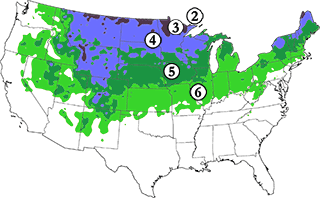
Hardiness Zones
The White Spruce is an excellent choice for cold climates, thriving in USDA hardiness zones 2 through 6.
Soil and Sun Preference
This spruce prefers well-drained, acidic soil and full sun, but it is highly adaptable and can tolerate a variety of conditions.


Mature Size and Growth Rate
The growth pattern of the White Spruce reveals a compelling aspect of this majestic tree. Although its growth isn’t remarkably swift, a steady medium pace adds about a foot to its stature annually. This consistent rate ensures that, over time, the White Spruce reaches impressive heights in ideal conditions, typically ranging between 40 to 60 feet. Coupled with a spread that can span 10 to 20 feet, this tree transforms from a modest sapling into a towering beacon of greenery. This steady but definitive growth showcases the tree’s adaptability and tenacity, further underlining its status as a robust member of the boreal forest ecosystem.
Attributes
Known for its conical shape and dense, blue-green needles, the White Spruce is a classic choice for a Christmas tree. Its bark is thin and scaly, and its cones are long and slender.


Wildlife Value
The tree provides excellent shelter for birds and small mammals, while its seeds serve as food for a variety of wildlife.
Care
White Spruce trees are low-maintenance, requiring little care beyond the initial planting and watering.


Characteristics and Invasive Nature
The White Spruce is not considered invasive. However, due to its size and extensive root system, it should be planted with care and given ample space to grow.
Edible or Not
While the tree itself is not edible, the young shoots of the White Spruce can be used to make spruce beer or tea.


Varieties
The White Spruce’s versatility is showcased in the various cultivars that have been developed, each offering unique characteristics that lend charm to different landscapes. Among these, ‘Conica,’ known as the Dwarf Alberta Spruce, stands out for its compact size and dense, uniform foliage. Despite its smaller stature, this dwarf variety captures the essence of its larger cousin, presenting an ideal option for spaces where a full-sized tree might be too overpowering. On the other end of the spectrum, the ‘Pendula’ cultivar, or Weeping White Spruce, is famed for its unique weeping habit. This cultivar drapes its branches down in a graceful sweep, offering a stark contrast to the usual upright habit of spruces. This variety serves as a captivating focal point in any garden, combining the resilience of the White Spruce with a touch of elegant drama. These two cultivars highlight the adaptability of the White Spruce, offering options for diverse landscaping needs.
Common Pests & Diseases
Common threats include the spruce budworm and spruce gall aphid. Diseases such as needle cast and canker can also affect this tree.

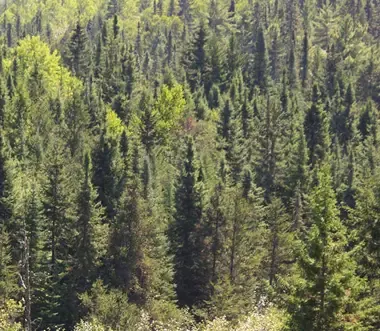
Habitat Requirements
Originally found in boreal forests, the White Spruce is highly adaptable and can thrive in a variety of habitats as long as it has access to full sunlight and well-drained soil.
Pruning and Propagating
Pruning is generally not necessary unless shaping is desired. The tree can be propagated through seeds or cuttings, though growing from seeds is often more successful.
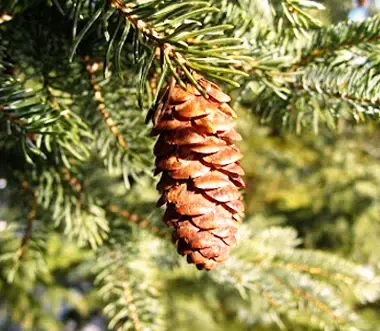

Benefits and Disadvantage
Aside from its ornamental value, the White Spruce is useful for windbreaks and erosion control. The main disadvantage is its susceptibility to pests like spruce budworm.
Frequently Asked Questions about the White Spruce Tree
Q1: What is the scientific name of the White Spruce tree? A: The scientific name of the White Spruce tree is Picea glauca.
Q2: Where is the White Spruce tree native to? A: The White Spruce tree is native to North America, specifically found across the northern regions of the United States and Canada.
Q3: How tall does the White Spruce tree grow? A: The White Spruce tree is known for its impressive height, reaching an average of 40 to 60 feet (12 to 18 meters) at maturity, and in exceptional cases, it can reach heights of up to 100 feet (30 meters).
Q4: What are the distinguishing characteristics of the White Spruce tree? A: The White Spruce tree has a conical shape with dense foliage and sharp, short needles that are typically blue-green or gray-green in color. It also produces small, cylindrical cones that mature in the fall.
Q5: Does the White Spruce tree have any specific soil or sun preferences? A: White Spruce trees prefer well-drained soils, including sandy loam or loamy soils. They can tolerate a range of pH levels and exhibit moderate tolerance to shade, although they thrive best in full sun.
Q6: What are the hardiness zones for the White Spruce tree? A: The White Spruce tree is highly adaptable and can grow in a wide range of climates, typically thriving in USDA hardiness zones 2 to 6.
Q7: How fast does the White Spruce tree grow? A: The White Spruce tree has a moderate growth rate, adding approximately 12 to 24 inches (30 to 60 cm) of height per year.

David Murray
Forestry AuthorI'm David Murry, a forestry equipment specialist with a focus on chainsaw operation. With over 13 years of experience, I've honed my skills in operating and maintaining a wide range of machinery, from chainsaws to log splitters. My passion for the outdoors and commitment to sustainable forestry drive my work, which emphasizes safety, efficiency, and staying updated with industry advancements. Additionally, I'm dedicated to sharing my expertise and promoting environmental awareness within the forestry community.


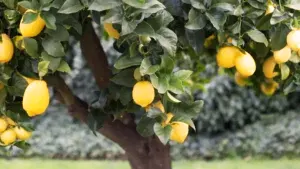


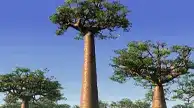
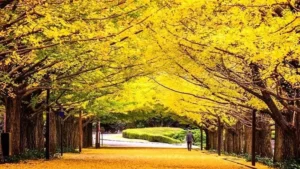
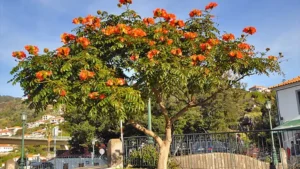
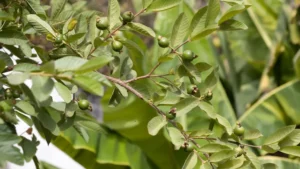

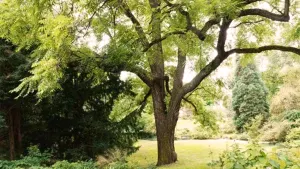
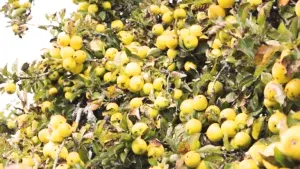
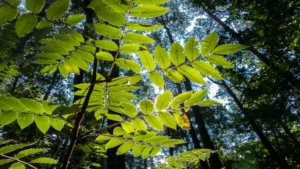
Leave your comment